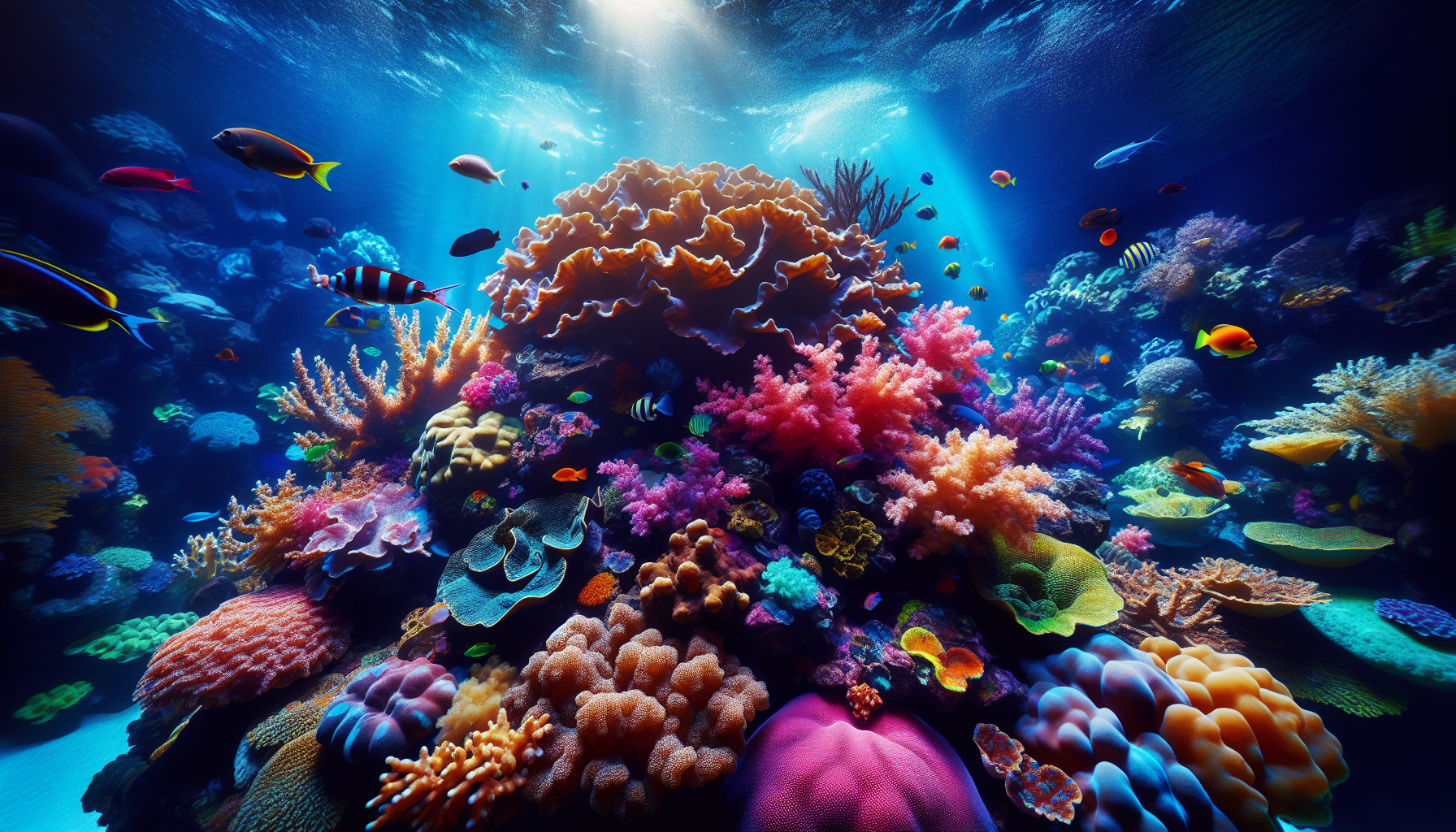The Great Barrier Reef, located off the northeastern coast of Australia, is a vibrant underwater utopia stretching over 2,300 kilometers. It is the largest coral reef system on the planet, comprising nearly 3,000 individual reefs and hundreds of islands. Home to a breathtaking array of marine life, it is a living masterpiece, but one that is in peril.
Underneath the shimmering surface of the ocean lies a bustling metropolis of biodiversity. The coral structures, created by countless tiny polyps, form intricate patterns that act as both homes and nurseries to myriad sea creatures. Over 1,500 species of fish swim amidst the corals, ranging from the brightly colored clownfish and majestic angel fish to the elusive stonefish and camouflaged seahorses.
Beyond the fish, the Great Barrier Reef is a sanctuary for larger marine inhabitants. Graceful sea turtles glide through the water, while gentle giant manta rays perform acrobatics above the coral formations. Dolphins play in the azure waters, and whales, including the mighty humpback, pass through on their annual migrations. This diverse ecosystem supports not only marine life but also countless seabirds that rely on the reef's bounty.
Despite its awe-inspiring beauty and biodiversity, the Great Barrier Reef faces unprecedented threats. Climate change poses the most significant existential risk, chiefly through rising sea temperatures. When the ocean's warmth exceeds thresholds, corals become stressed and expel the symbiotic algae living in their tissues, causing the once-vibrant corals to turn ghostly white in a process known as coral bleaching. Prolonged bleaching can lead to coral death, jeopardizing the entire reef ecosystem.
Human activities further exacerbate the reef’s vulnerability. Coastal development and agricultural runoff introduce pollutants that degrade water quality and fuel outbreaks of predatory crown-of-thorns starfish, which consume coral polyps. Overfishing disrupts the balance of marine life, while plastic pollution poses severe threats to animals that mistake debris for food.
Conservation efforts, however, offer hope amidst these challenges. Initiatives aimed at reducing carbon emissions, enforcing sustainable fishing practices, and improving water quality are critical. Projects that restore damaged reefs and breed heat-resistant coral species provide innovative solutions for resilience against climate change. Meanwhile, increasing public awareness and engagement can foster a collective commitment to protect this global treasure.
The Great Barrier Reef is a fragile wonder and a testament to nature's ability to cultivate complex and interconnected life systems. Its preservation requires a concerted effort from global communities, underscoring the need for sustainable practices and international cooperation. If actionable steps are taken swiftly and decisively, there remains hope that this vibrant ecosystem will continue to thrive for generations to come, retaining its status as one of the planet's most remarkable natural marvels.
